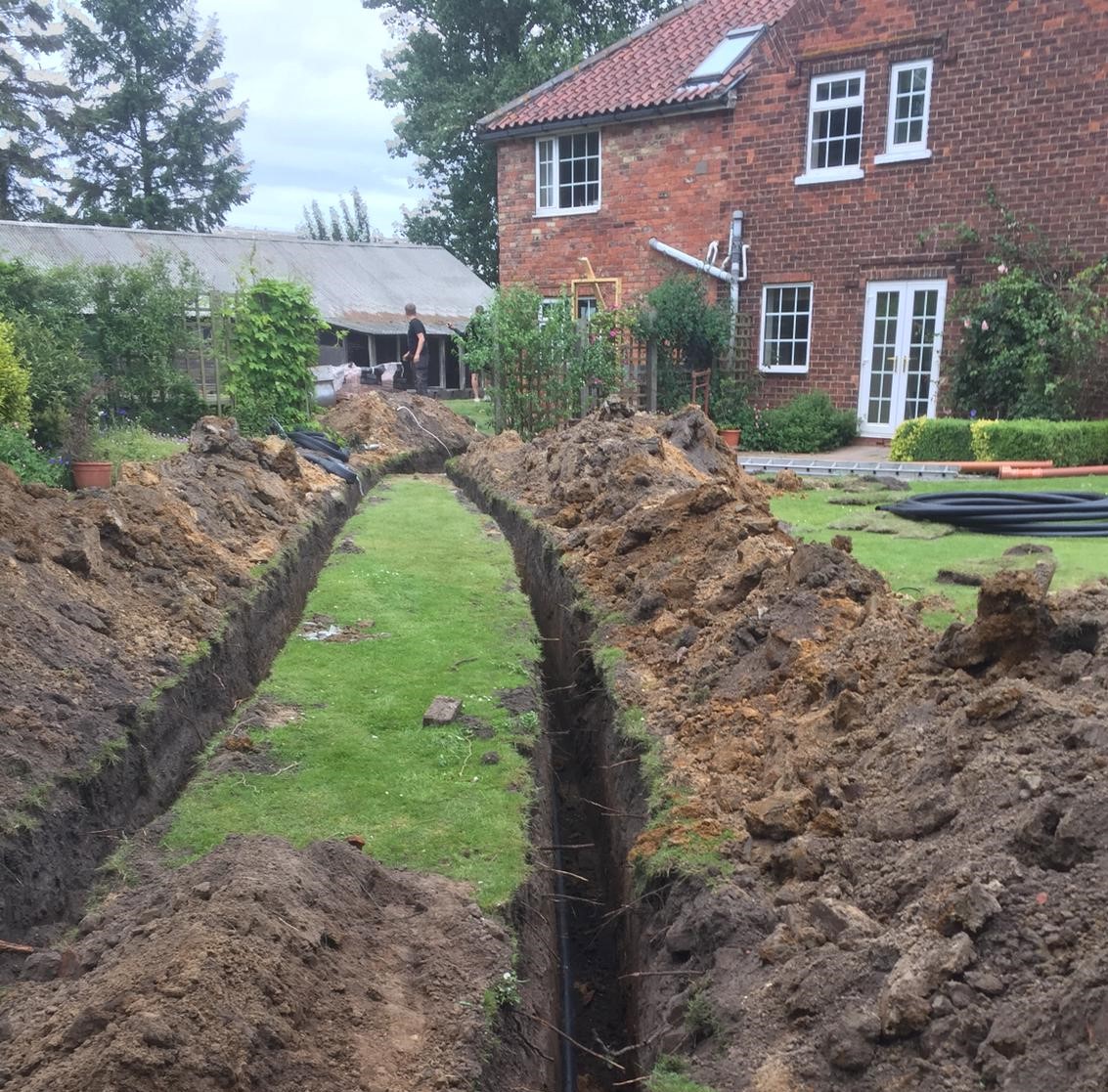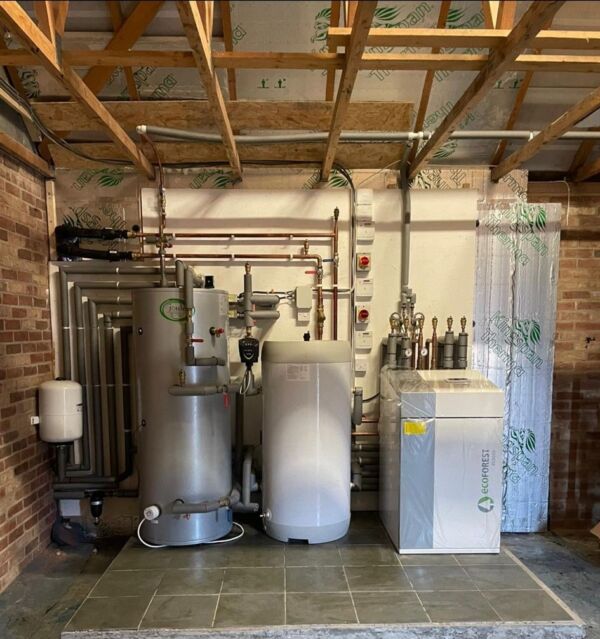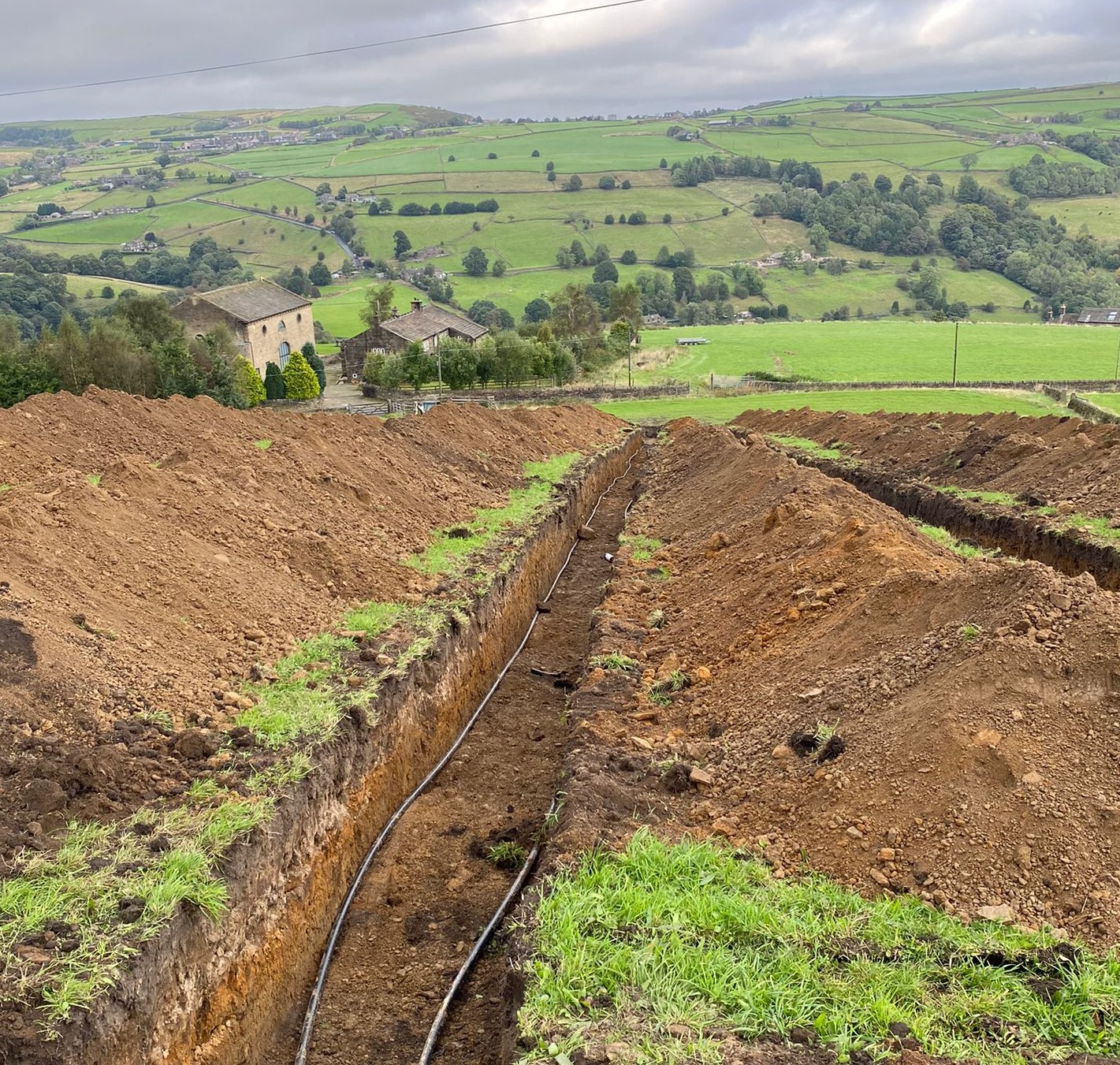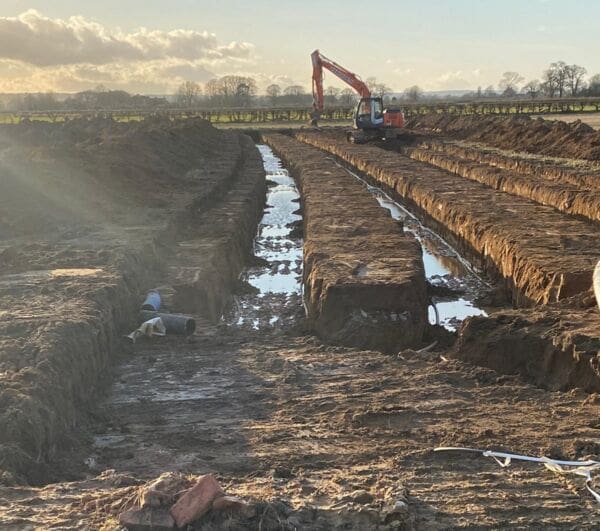Ground Source Heat Pumps
Whether replacing an old heating system, undertaking a renovation or creating a new build project, a ground source heat pump can provide a cheaper and more sustainable solution. You don’t need acres of land, with different options available a ground source heat pump solution may be the answer.
We are a BUS approved installer and ready to check eligibility and process the £6,000 installation incentives.
How ground source heat pumps work
A ground source heat pump circulates glycol (antifreeze) around a collector pipe, called a ground loop, which is buried in the ground. Heat from the ground is absorbed into the fluid and is then passed through a heat exchanger into the heat pump, where it is concentrated for use in your home or business.
The ground stays at a fairly constant temperature all year around once we reach about 1 metre under the surface, so the heat pump can be used throughout the year.
The length of the ground loop depends on the size of your property and the amount of heat you need. Longer loops can draw more heat from the ground, but need more space to be buried in. If space is limited, a vertical borehole can be drilled instead.







